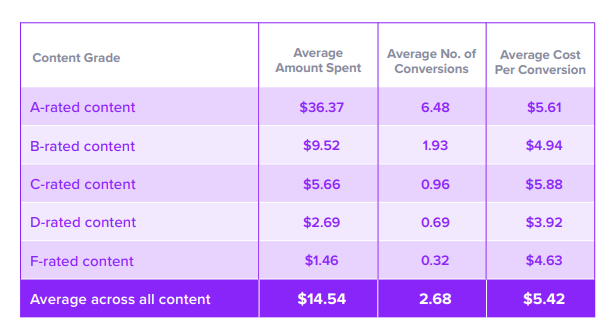How UK Brands Can Boost Product Page Performance on Amazon

While 2020 was the worst year for U.K. retail sales in a quarter-century, several brands adapted to the surprise “pandemic crunch” with great success — or even experienced a year-to-year gain.
Consider this: While experts believe that retail, non-food sales in the U.K. dropped by about 24% in 2020, ecommerce retail sales were actually shown to increase by a staggering 36% during the same period. In 2019, which is the most recent data available, 30% of all online sales in the U.K. were Amazon transactions.
As a result, industries are making moves — and fast.
These broad, COVID-19-inspired changes in consumer behavior prompted brands to spend over $17 billion in advertising on ecommerce platforms alone in 2020 — an increase of nearly 39% from 2019. Again, Amazon stands to get the lion’s share of the action: Analysts project the online retail giant received over 75% of that $17 billion in 2020.
Think of Amazon as something like “The Big Apple” of ecommerce: If you can make it there, you can make it anywhere.
There are several concrete steps your brand can take to stand out from your competition in the U.K. Learn how your business can not only adapt to this rapidly changing landscape but chart a successful course for years to come.
Content Is King for Ecommerce
Salsify joined forces with digital advertising platform Kenshoo and ecommerce performance analytics platform Profitero to undertake a comprehensive study of precisely what contributes to a successful brand experience on the Amazon platform.
The three combined their massive data sets to analyze millions of product pages across a variety of categories, covering a period from January 2019 through October 2020. The "Content Advantage in Amazon Advertising" report shows how improvements to the product page can help boost brand performance.
The researchers were able to confirm what many marketers long suspected: Your content quality is one of the most critical elements of not only capturing your customer's attention but guiding them along each step of the sales funnel toward conversion.
How a Targeted Product Page Optimization Strategy Supports Ecommerce Success
While compelling brand experiences are great for fostering familiarity and trust with your potential customers, that's not all: The researchers also found that a targeted product page optimization strategy can even improve your product's page ranking — all while cutting your average cost per conversion.
These essential ecommerce metrics could help your brand find ecommerce success.
Increased Conversion Rates
It may seem intuitive to conclude that, all things being equal, a company that provides consumers with consistently engaging content will often win out over a competitor who doesn't.
For instance, this study found A-rated content on Amazon had 21 times more conversions than F-rated content, with a 53% more effective conversion rate.
Improved Page Search Rank
Search rank might not be the first thing that comes to mind when considering the benefits of product page optimization, but it certainly helps — and can provide a positive, reverberating butterfly-effect-style on your other touchpoints too.
Researchers found that A-rated content appeared 5% higher in sponsored rank search results than B-rated content on the platform. It also performed 3.7% better in organic search results and 2.1% higher in actual rankings.
But even being “less than perfect” can have its advantages: For example, the team’s findings indicate that moving from even a “C” to a “B” grade could increase your visibility by over 4% in the actual rankings.
This improvement can lead to a positive-reinforcing cyclical effect: The more buyers see and purchase your product, the more the algorithm will favor it during future searches for similar items, which will lead to more sales.
Lowered Cost Per Conversion (CPC)
The researchers found that not only did high-quality product page optimization drastically increase conversions, it did so with only a 2% higher average cost per conversion (CPC) from the average measured across all content grades.
This outcome will not only increase revenue but can free up your ad spend dollars to fund further efforts at growth throughout your organization. For example: Brands might consider reallocating their ad-spend on A-rated content toward funding an improvement in their B- or C-rated content pages.

Source: "The Content Advantage in Amazon Advertising" Report
Product Page Strategy 101
The researchers found that even minor changes can have in vastly improving your product page conversion rates. Here are their findings to help you build your product page optimization strategy.
A+ Content Makes a Big Impact
Not only does it provide an excellent opportunity for a multimedia showcase of your product's top features, but the researchers also found that pages featuring Amazon A+ Content, which is also called enhanced content or rich media, saw a 40% higher conversion rate than those without.
The Number (and Type) of Images Are Important
Shoppers will want to examine your product just as carefully as they could if they were there in person, and brands who oblige this preference are more likely to close the sale.
Consider increasing the number of photos you feature on your product page, whether you feature the packaging, multiple sides of the product, lifestyle images, etc.
The benefits can be significant: The study found going from five to 10 images can increase your conversion rate by 488%, bringing an average of 1.9 conversions up to 11.2.
But even minor changes can make a difference: Moving from five to six images increased conversions by 32.3%, while moving from nine to 10 images bumped it up by 36.5%.
Use Bullet Points To Break Up Text — But Not Too Many
Unlike photos, more isn't better here: The researchers point to five bullet points of text as the ideal number to share with customers. Increasing from four to five bullet points alone saw an increase in conversions of 181.2%.
Product Ratings and Reviews Still Matter
Reviews still matter: All of your hard work creating impactful brand experiences will be for naught if third-party reviewers cast doubt on your brand's central promises. Make sure you're carefully managing your customer reviews.
The report notes that moving from two to three stars can double your conversions — while moving from three to four stars can increase sales by as much as eight times.
Moving Into the Future of Commerce
One last hopeful finding for any marketers charting their course amid an uncertain future: The report found that only 6.9% of products on Amazon have A-rated content — and nearly two-thirds (62%) of it rate as an “F.”
That means that over 90% of product pages on Amazon have room for improvement, and those who act quickly and smartly have a significant opportunity on their hands for tomorrow.
Download the full report, “The Content Advantage in Amazon Advertising,” to learn more about how product page optimization could help your brand meet and exceed your business goals.
Written by: Chris Caesar
Chris Caesar (he/him) is a professional writer with two decades of experience working with national publications, as well as top software-as-a-service (SaaS) and technology brands. He is passionate about crafting high-quality, lead-generating content that drives awareness and action.
Recent Posts
5 Ecommerce Tips To Help Marketers Enter the New Year Stress-Free
How Many Digital Sales Channels Do Shoppers Review Before Purchasing Products?
What the Data Says About Consumer Interest in AI Shopping Agents
Subscribe to the Below the Fold Newsletter
Standing out on the digital shelf starts with access to the latest industry content. Subscribe to Below the Fold, our monthly content newsletter, and join other commerce leaders.


.svg)